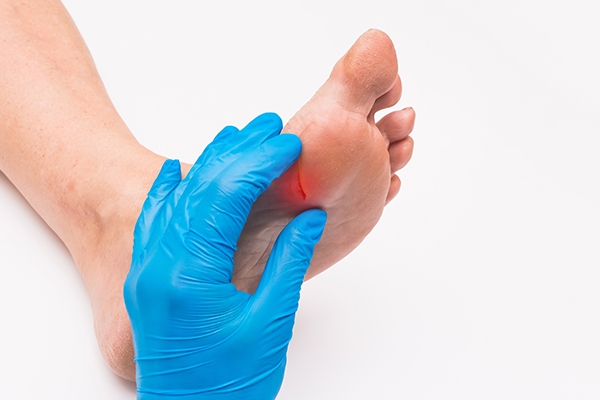How to Care for Your Feet When You Have Diabetes

Diabetes can reduce blood flow and nerves so that blood flow to the feet is limited. This causes wounds to become more easily infected and more challenging to heal, raising the risk of amputation.
Diabetes mellitus (DM), often also called diabetes, is a chronic disease (long-term) characterized by blood sugar levels (glucose) exceeding normal limits. This condition affects how the body uses sugar (glucose) as energy.
Obesity, hypertension, and poor sleep quality are risk factors for developing diabetes. People with a history of diabetes or who have diabetes must keep their blood sugar level within normal ranges.
Several types of blood sugar level tests are commonly used for the early check and diagnosis of diabetes, including:
- Random blood sugar test: <200 mg/dL.
- Fasting blood sugar test: 70-99 mg/dL
- Glucose tolerance test/postprandial blood sugar (GDPP): 70-139 mg/dL
- The A1C test: <5.7
Diabetes can cause various complications. Foot and skin issues are typical complications, usually in the form of wounds that do not heal.
High blood sugar levels make it easier for fungi and bacteria to grow. Furthermore, the body's ability to heal wounds decreases because diabetes can reduce immunity.
Diabetic foot problems

1. Diabetic neuropathy
People with diabetes are at higher risk of peripheral vascular disease, especially if they are not taking medication or controlling their blood sugar levels. This condition occurs when fatty deposits narrow the blood vessels, reducing circulation.
Nerve damage, or diabetic neuropathy, usually occurs in the feet and hands, which can cause numbness, tingling, or pain. Diabetic neuropathy also reduces the ability to feel pain, heat, or cold.
Pain is the body's natural signal that something is wrong. Not being able to feel pain in the soles of your feet increases the risk of sores, ulcers, and blisters, leading to infections that often go unnoticed.
Nerve damage can occur in anyone with diabetes, but the risk is increased if the following factors are present:
- Uncontrolled blood sugar.
- Long-term diabetes
- Having overweight.
- Being older than 40 years old.
- Having high blood pressure.
- Having high cholesterol.
2. Blisters
Diabetes raises the risk of blisters through several mechanisms. Diabetic neuropathy can reduce the ability to feel when shoes are uncomfortable or tight, increasing the risk of blisters. In addition, neuropathy can change movement patterns, increasing the risk of blisters.
People with diabetes can develop a condition called “bullous diabeticorum,” blisters that appear spontaneously for no apparent reason. Although doctors don’t know precisely what causes these blisters, they are pretty common in diabetics.
Untreated blisters can become infected, causing pain and increasing the risk of infection spreading throughout the body.
3. Diabetic ulcers
Around 7% of people with peripheral neuropathy develop diabetic foot ulcers each year. The combination of poor circulation and nerve damage means a person may be unaware of an ulcer until it has progressed.
Inadequate blood flow can also slow healing. If left untreated, ulcers can cause more damage to the foot and make it more prone to infection. Ulcers can also make walking very painful. Pressure from shoes and socks can worsen symptoms and slow recovery.
4. Diabetic calluses
A callus is an area of complex, thickened skin cells due to the buildup of dead skin cells. Large calluses on the feet can interfere with walking comfort and affect the shape of shoes. The primary issue with calluses is that they worsen ulcers and infections.
Therefore, keeping calluses clean and removing them safely is critical to maintaining foot health. At GWS Medika Clinic, a health clinic in Jakarta, you can get minor surgical services to remove calluses safely.
5. Foot infections
Infected diabetic ulcers can lead to severe complications if not treated promptly. The infection can spread to the circulation, damage organs, and even death.
Diabetes also increases the risk of gangrene, which is tissue death and can lead to amputation.
Foot infections and poor circulation can also damage the underlying structure of the foot, including the bones, leading to a condition known as “Charcot foot.” This changes the shape of the foot, causing pain and difficulty walking.
Tips for healthy feet

Most people with diabetes can prevent serious foot problems.

People with diabetes must control their blood sugar levels to maintain good health. This can be accomplished by seeking treatment, paying attention to nutrition, exercising regularly, and avoiding a sedentary lifestyle.
If you want to evaluate or manage your diabetes, visit the GWS Medika Clinic, a health clinic in Jakarta.



